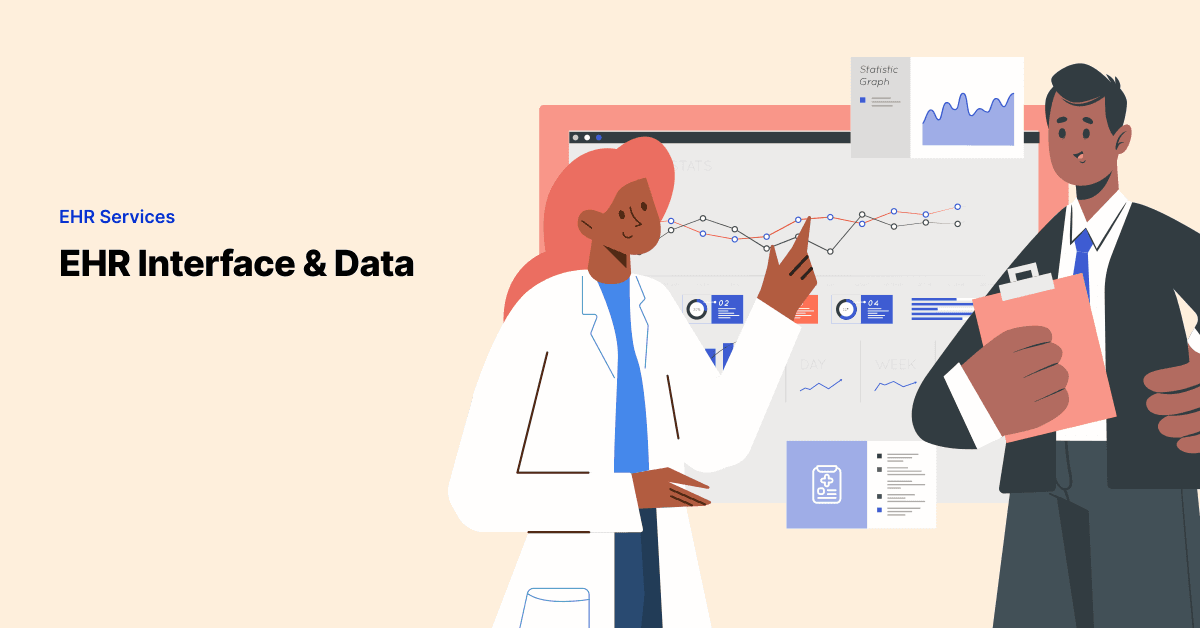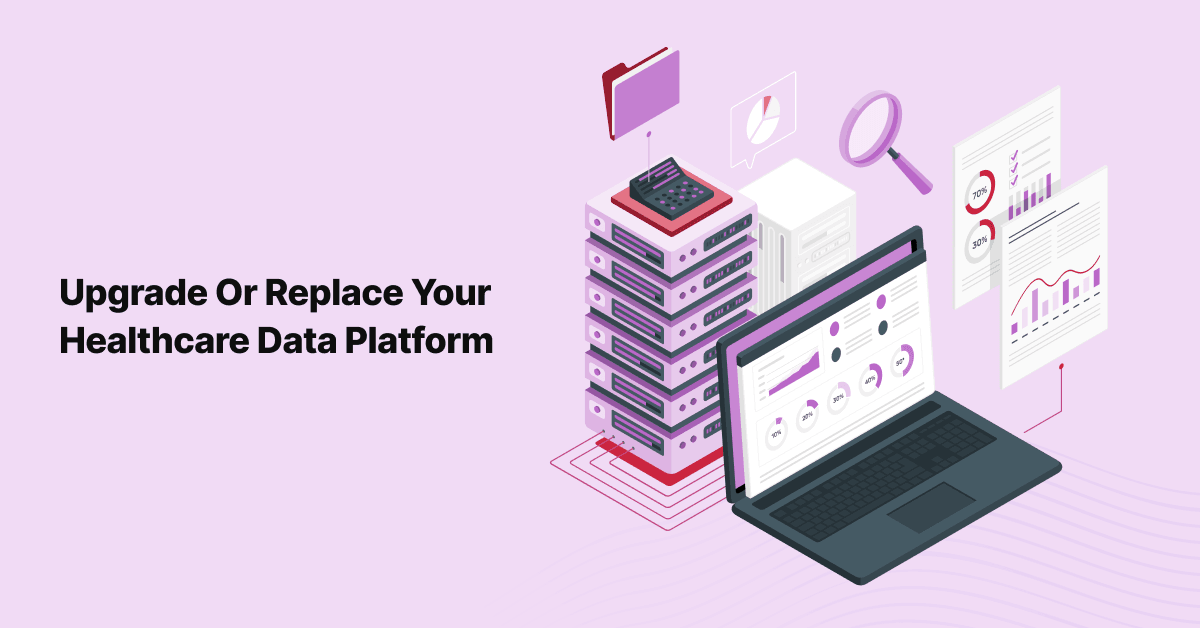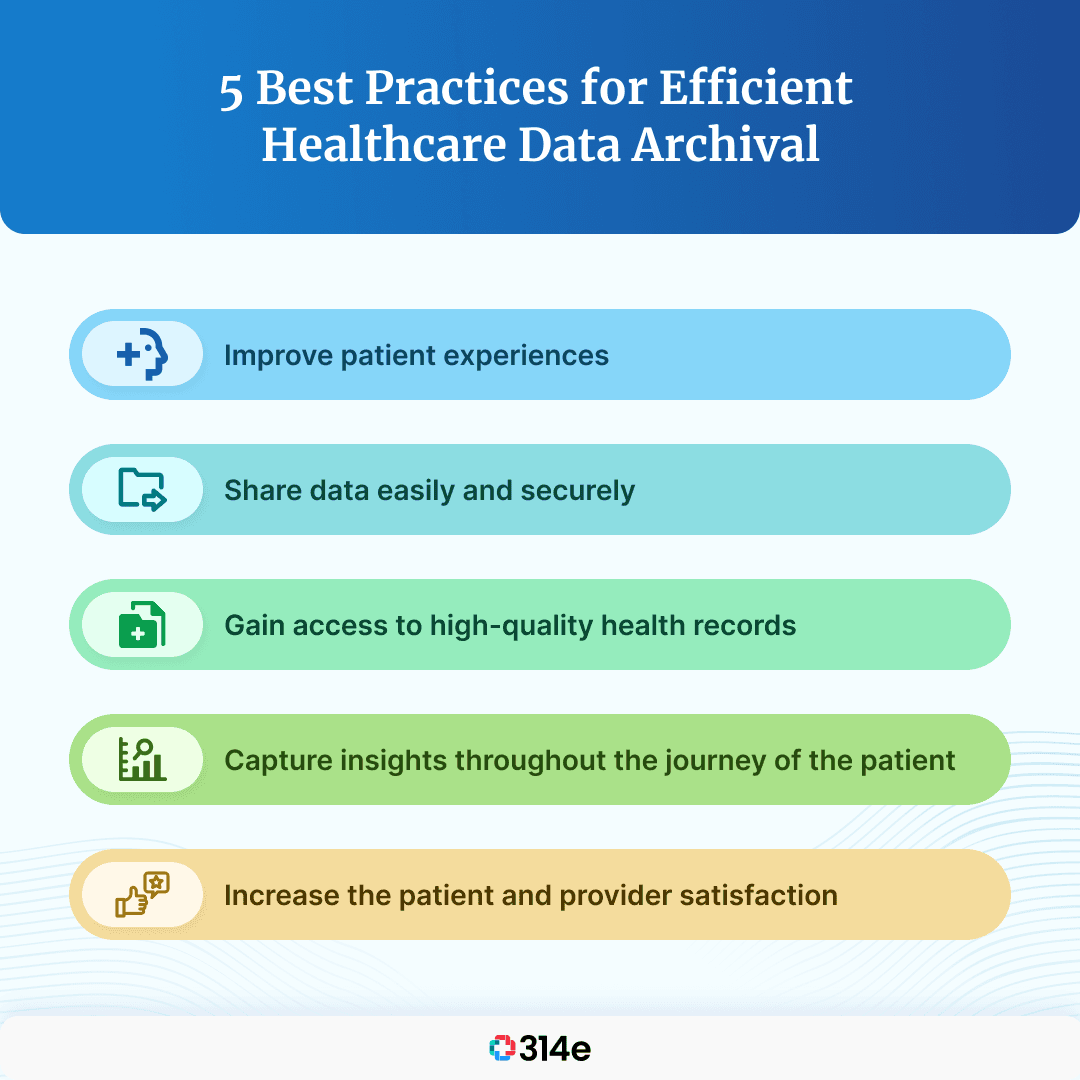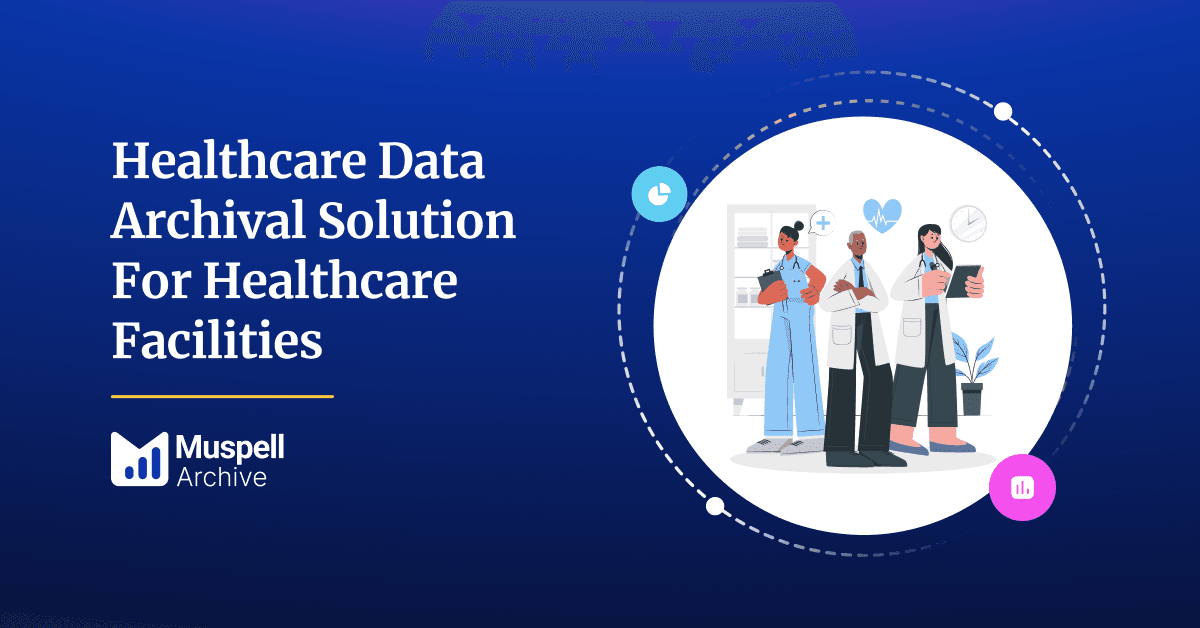
EHR Interfaces: Pursuing More than Data for Datas Sake
The challenges associated with connecting multiple, disparate EHR systems — be it ancillary provider or …

The Healthcare Data Platform is one of the most useful and effective innovations that have occurred in healthcare in the past decade. Managing large-scale data in hospitals can often feel very overwhelming. However, choosing and implementing the right Healthcare Data Platform drives the optimum utilization of data assets.
In this article, you will be able to explore:
A Healthcare Data Platform helps in collecting, storing, and consuming data from various sources. It is the base Online Analytics Processing (OLAP) infrastructure that enables the integration, management, and utilization of health data for an organization's business use cases. While most of the use cases served by a Healthcare Data Platform are related to analytics, there are a few related to patient engagement, applications, and APIs.
The types of data that Healthcare Data Platforms deal with include: Clinical (Electronic Medical Record aka EMR) Data, Health Claims, Care Management Data, Social Determinants of Health, Patient and Member-Reported Data, Omics Data, and many others.

Managing large-scale data does not have to be a challenge all the time. Implementing the correct Healthcare Data Platform is imperative. There are multiple benefits of implementing the correct Healthcare Data Platform. Some of them are as follows:
Most healthcare organizations find themselves in one of the three stages of the maturity of their data platforms.
1. Disparate and siloed databases and data stores, managed and controlled by various business segments, utilized for analytics and other use cases.
2. Old school relational Operational Data Stores and an Enterprise Data Warehouse fed data from multiple Online Transaction Processing (OLTP) systems and other sources.
3. Incorporation of a Data Lake Architecture in addition to the Enterprise Data Warehouse, accommodating both batch and streaming data, and full support for advanced analytics including Artificial Intelligence and Machine Learning.
Stage 3 is preferable to stages 1 and 2, but the stage of data maturity is not the only criterion to use when deciding to upgrade or replace an organization’s Health Data Platform. Below, I present some criteria to evaluate whether an organization’s Health Data Platform is performant or needs to be upgraded or replaced.
The term Big Data today might sound a bit dated. However, that doesn’t stop it from still being useful for understanding an organization’s data inventory. Big Data has traditionally been defined based on the three Vs: Volume, Velocity, and Variety. Many healthcare organizations’ data platforms hit a wall on one of the three Vs when it comes to accommodating Big Data.
In some cases, there is an increase in the volume of data due to more business partnerships and acquisitions, and because there are more sources of data. In other cases, it is the new types of data (variety) that must be accommodated – an organization that was previously dealing with just EMR data might suddenly find itself needing to integrate Health Claims, Care Management Data, Wearables, and Medical Device Data, Social Determinants of Health, Patient-reported Data, and Omics (genomics, proteomics, metabolomics, etc.) Data. Lastly, there could be a velocity adjustment issue – data that was previously processed in weekly or even daily batches now needs to be channeled real-time, in streams, into analytics processes. Whenever a healthcare organization finds that it has a big-data adjustment problem, there is a need to think about upgrading or replacing its data platform.
This is a list, by no means exhaustive, of the business use cases that a Health Data Platform will need to address. Not all of these are applicable to all organizations, but many are.
One of the important pointers to the inadequacy of a Health Data Platform is its inability to address one or more of these business use cases. A common scenario is one in which a new business use case is added or discovered, and the organization finds that its current data platform is unable to support it. This leads to a lot of issues for the business and for Information Technology – as the analysis tries to figure out if the inadequacy is related to the data platform or if the business use case needs to be supported someplace other than the platform.
Specific technical and operational issues can also create the need to look at upgrading or replacing an existing Health Data Platform. These can include the following (again, not an exhaustive list):
Of these six issues listed, the first three are technical (related to the architecture of the platform itself), and the last three are operational.
The choice on whether to upgrade or replace your Health Data Platform depends on the specific shortcomings you find in it. Some issues are amenable to upgrades while others require a complete replacement of your Health Data Platform with something more modern and performant.
The following issues lend themselves to upgrades of the current platform:
1. Horizontal or vertical capacity-scaling, if the platform supports them.
2. If the platform supports it, the addition of tools and processes to support enhanced capabilities like working with streaming data.
3. Adding ancillary and supportive services like DataOps and Master Data Management to the current platform.
4. Adding a data layer to support dashboards and business intelligence.
On the other hand, if your Health Data Platform does not address some of the key performance criteria or functionality areas, and cannot be upgraded to do so, it is time to consider a replacement. When choosing a new Health Data Platform to replace your existing one, these are the factors that are important to keep in mind:
1. Cloud-based data platforms have become the preferred choice for most organizations as they allow for features like dynamic scaling, lower Total Cost of Ownership (TCO), and better reliability and security.
2. The TCO of various options should be compared in a granular manner.
3. Platforms that offer ACID transactions in the data-lake component are superior to those that do not.
4. Analytics and AI/ML should be directly supported within the platform.
5. Business use cases should be supported.
6. It should be easy to migrate data and processes to the new platform from the existing one over a period of 12-18 months.
Evaluating the performance of your current Health Data Platform and deciding whether to upgrade or replace it is a difficult choice. Also, it is a decision that has huge financial and business implications. Use the criteria listed above to help guide you.
Healthcare organizations sometimes find it compelling to upgrade or replace their data platforms themselves instead of using a commercial vendor. This is usually driven by the desire to control the implementation more closely. However, in many cases, unforeseen challenges and roadblocks arise when an organization tries to do it all on their own. These include:
Choosing to upgrade or replace your healthcare data platform on your own might be the wrong choice for many organizations compared to utilizing a healthcare IT data platform vendor.
Join over 3,200 subscribers and keep up-to-date with the latest innovations & best practices in Healthcare IT.

The challenges associated with connecting multiple, disparate EHR systems — be it ancillary provider or …

When it comes to data conversion for health information (PHI), there are many aspects to consider to ensure …

The healthcare sector is evolving into a competitive arena where the accumulation of Protected Health …